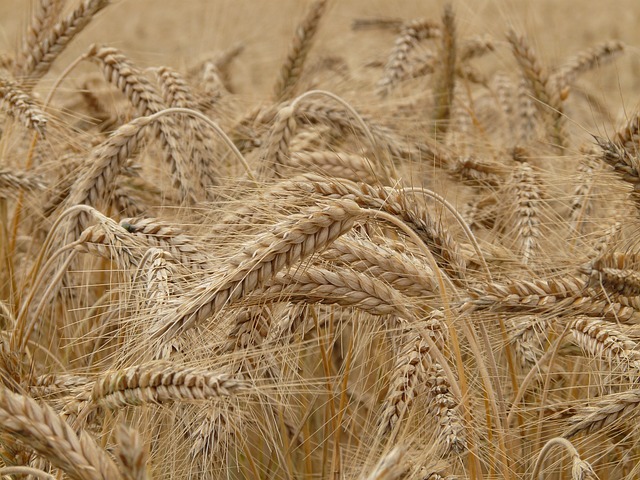Wheat is one of the most important staple food crops of the world and is a major determinant of global food security. With the advancement in crop improvement, large number of high yielding varieties is being developed across the world, which is essential for meeting the rising demand caused by the increasing population.
The rapid developments in crop breeding techniques have led to release of huge number of improved varieties across the world, including in India. These varieties are getting extensively adopted and thus, contributing to the consistent increase in the national wheat production. Though an increase in production is essential for national food security, the uniform crop phenology and narrow genetic base of varieties are a matter of serious concern. Over decades, there is significant loss of diversity within the crop and also within agro-ecological niches where mono-cropping has set in. This has led to breakdown of genetic resistance against many of the major pests and diseases that threaten wheat production. Rapid evolution of new virulent pathogen races makes most of the available genes ineffective. An effective resistant genotype should possess a combination of several minor and major genes, for which a diverse pedigree is essential. Hence, it becomes imperative that wheat breeding should rely heavily on the wealth of diverse genetic resources that are conserved in various ex-situ collections across the world.
Conservation of plant genetic resources has been given due priority during the last few decades. In wheat, the largest ex-situ germplasm collection is held by CIMMYT, Mexico (1,46, 505) followed by USDA- ARS (66,246), ICARDA (44,026), Australian Grains Genebank (42,624) and NI Vavilov Institute (35,310). The Indian Wheat Genetic Resources are collectively conserved in its National Genebank located at National Bureau of Plant Genetic Resources, New Delhi. It has the largest collection of wheat in the Asian region, with around 32,000 accessions (of 51 species) in its long term storage. This collection has around 18,000 indigenous accessions and 14,000 exotic accessions. Amongst the indigenous accessions, a significant proportion of traditional cultivars/landraces/farmers’ varieties (around 2000 accessions) have been collected from various wheat growing zones of India comprising of Uttarakhand, Himachal Pradesh, Uttar Pradesh, Rajasthan, Gujarat and Madhya Pradesh. Since these genotypes have genetically evolved within specific niches, they are treasure mine of economically important genes viz., high protein content (Bawaji from UP), drought tolerance (Safed Mundri and Lal mundri from Uttarakhand), heat tolerance (Halna from UP), salinity/alkalinity tolerance (Kharchia local from Rajasthan), lodging resistance (Gazariya from HP), soft white grain (Pissi Local), Heat + drought tolerance (Hindi 62), grain quality (Pusa 4/NP 4) etc. Some of the old wheat varieties that were cultivated prior to 1950s viz., Lal Kamal, Hard Red Calcutta, Karachi Choice white, Chandausi, Agra Local, Kathia etc are now available only in ex-situ collections and breeders rely on their conserved accessions for use in crop improvement. The National Genebank also makes systematic augmentation efforts from global genebanks and recently repatriation of Indian origin wheat accessions were made from John Inns Institute, UK, IPK Genebank Germany and Australian Grains Genebank.
The entire collection of cultivated wheat germplasm conserved in the National Genebank were characterized in a mega experiment, for 32 agromorphological traits and were made available to breeders for use in crop improvement. This data was used to derive a core set in wheat having highly diverse accessions, on the basis of range, coefficient of variation, and Shannon–Weaver diversity index. The composite core comprised of 2,226 accessions including 1,779 accessions of T. aestivum, 394 of T. durum and 53 of T. dicoccum. This venture was acknowledged in the Limca Book of Records. These accessions were also evaluated at multiple locations, with the aim to identify new sources of resistance to leaf, stem and stripe rusts and spot blotch diseases. The identified accessions with multiple rust disease resistance can be used as a source of resistance to improve existing high yield cultivars. Similar to rust, powdery mildew (PM) is another important disease of wheat worldwide. A comprehensive evaluation of wheat germplasm accessions (19,460) conserved in the National Genebank of ICAR–National Bureau of Plant Genetic Resources was conducted to identify sources of resistance to PM following Focused identification of germplasm strategy (FIGS) approach. Resistant accessions identified in the study will enrich the existing gene pool for PM resistance in wheat.
Amongst abiotic stresses, terminal heat stress is a major constraint for the successful wheat production A set of forty-two wheat germplasm lines (from amongst 21,800 accns conserved in NGB) were found promising for terminal heat tolerance, after extensive evaluation experiments conducted for multiple seasons. Work was also carried out for identification of salt responsive candidate gene based SSR markers in wheat, using accessions conserved in NGB.
Thus, the ex-situ collections are unique repositories of genes, which if properly utilized, form the ideal resource for crop improvement. In this regard, India’s rich collection of wheat genetic resources is leading the way.
